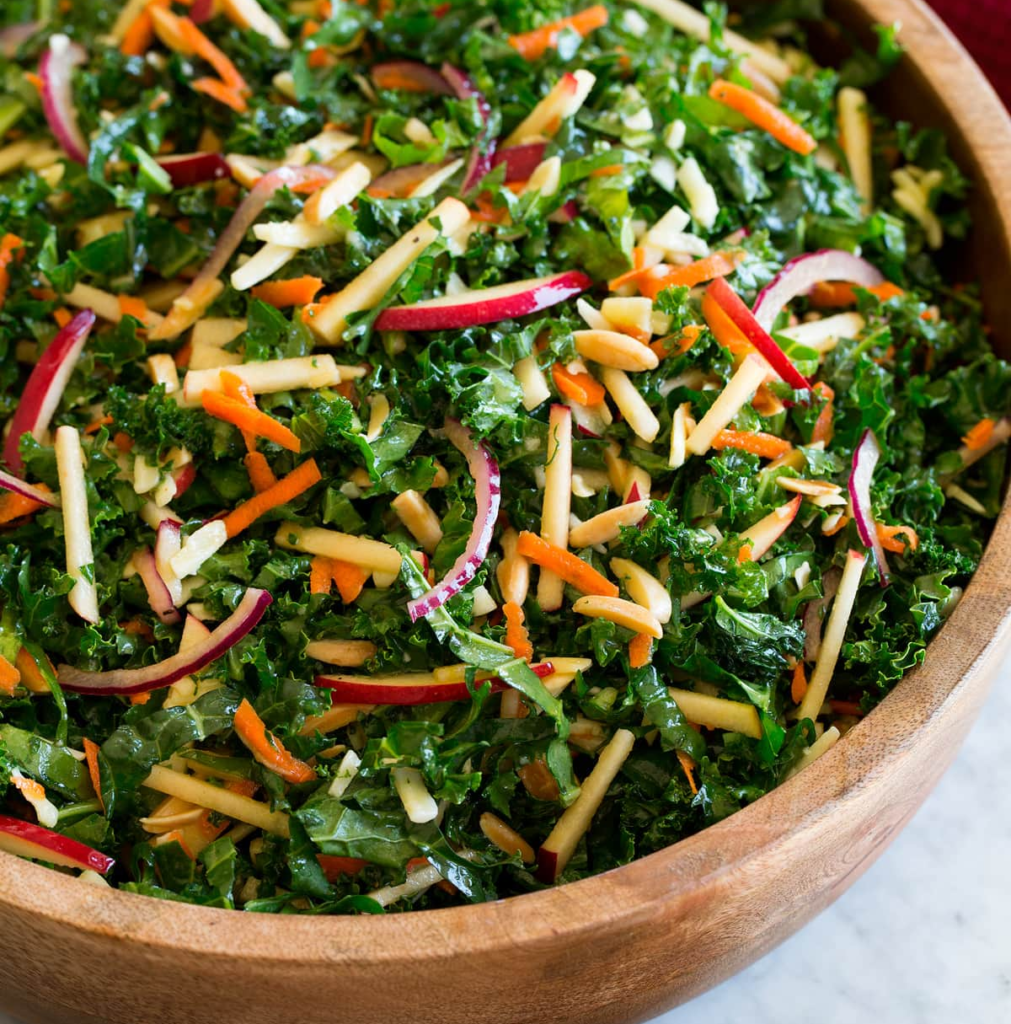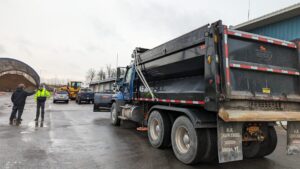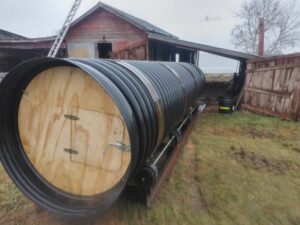Eating more locally produced food in the summer feels so easy, with a bounty of berries, ripe tomatoes, sweet corn, and fresh green beans ready to eat. In contrast, eating local during the long Adirondack winter seems less varied, with an abundance of root vegetables, winter squash, and sturdy greens like kale or cabbage. The winter months are a great time to experiment with new ways to cook these locally grown storage crops, as well as the local meats, eggs, and cheeses we can enjoy year-round.
AdkAction is launching a limited recipe series for our Farmacy project to share ways to enjoy eating local in the Adirondacks all winter long. Sign up here for our local food newsletter to receive these recipes monthly throughout the winter (or pick up a hard copy at the Keeseville Farmacy). Here’s one recipe to get you started:
Kale Salad
Ingredients:
Large bunch of kale (4-6 cups, chopped)
Day-old bread, cubed (for croutons)
1/2 cup grated parmesan, Romano, or cheddar cheese
4 Tbsp olive oil
Vinaigrette/other dressing
Spices (salt, pepper, onion powder, garlic powder, Italian seasoning, etc.) to taste
Extras:
2 Honeycrisp/Gala apples, thinly sliced
Sliced carrots, radishes, onion
Pepitas, sunflower seeds, walnuts, cranberries
1 egg – hard-boiled to over easy
An easy salad formula: greens and/or grains, sliced fruits/veggies, something crunchy, something savory, something sweet, and dress it up
Instructions:
Croutons
Oven: spread bread cubes on baking sheet, cover in 2 Tbsp (add more if needed) olive oil, bake at 350°F for about 15 minutes, until golden brown (flip partway through)
Stovetop: heat pan with 2 Tbsp olive oil, add in bread cubes, pan fry until crispy on each side
Massage kale in remaining 2 Tbsp olive oil and salt & pepper. Let rest for 5-10 minutes
Add sliced fruit/veggies, cheese, croutons, extras, and dressing & toss. Enjoy!
Download a PDF of Local Winter Recipes: Thanksgiving Edition here.
Download a PDF of Local Winter Recipes: Breads & Dips here.
Why prioritize locally produced food in your diet? Here are some of the many benefits:
- It’s good for the environment. Local food doesn’t have to travel as far to arrive on your plate, which helps reduce greenhouse gas emissions.
- Because of the shorter distribution chains for local foods, less food is wasted or spoiled before getting to your plate.
- It benefits the local economy, including supporting local farmers and other producers.
- It’s easy to track the supply chain back to the point of origin, which encourages sustainability and accountability.
- Local foods foster vibrant communities by connecting consumers with farmers and food producers.
![]()
Thanks to funding from CDPHP (Capital District Physicians’ Health Plan), Fair Food Pricing is now accepted at the Keeseville Farmacy. Learn more about Fair Food Pricing and how you may be qualified to save 30% on locally produced food here.





